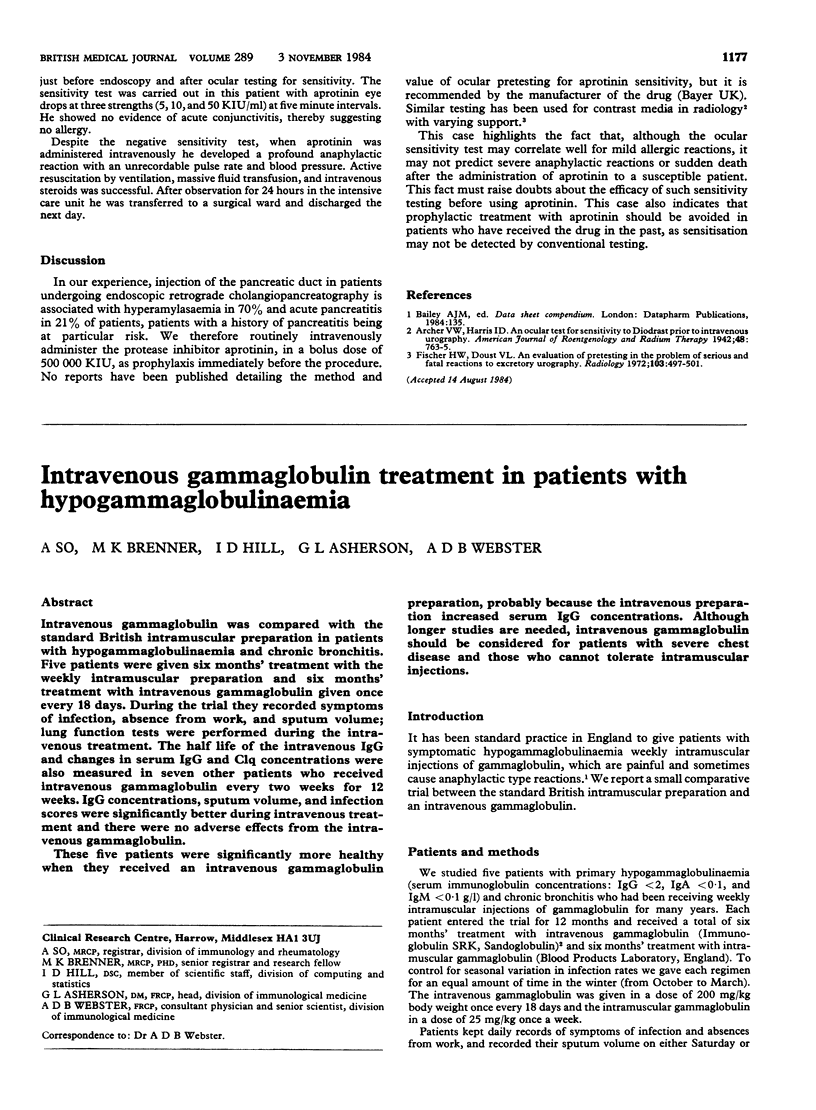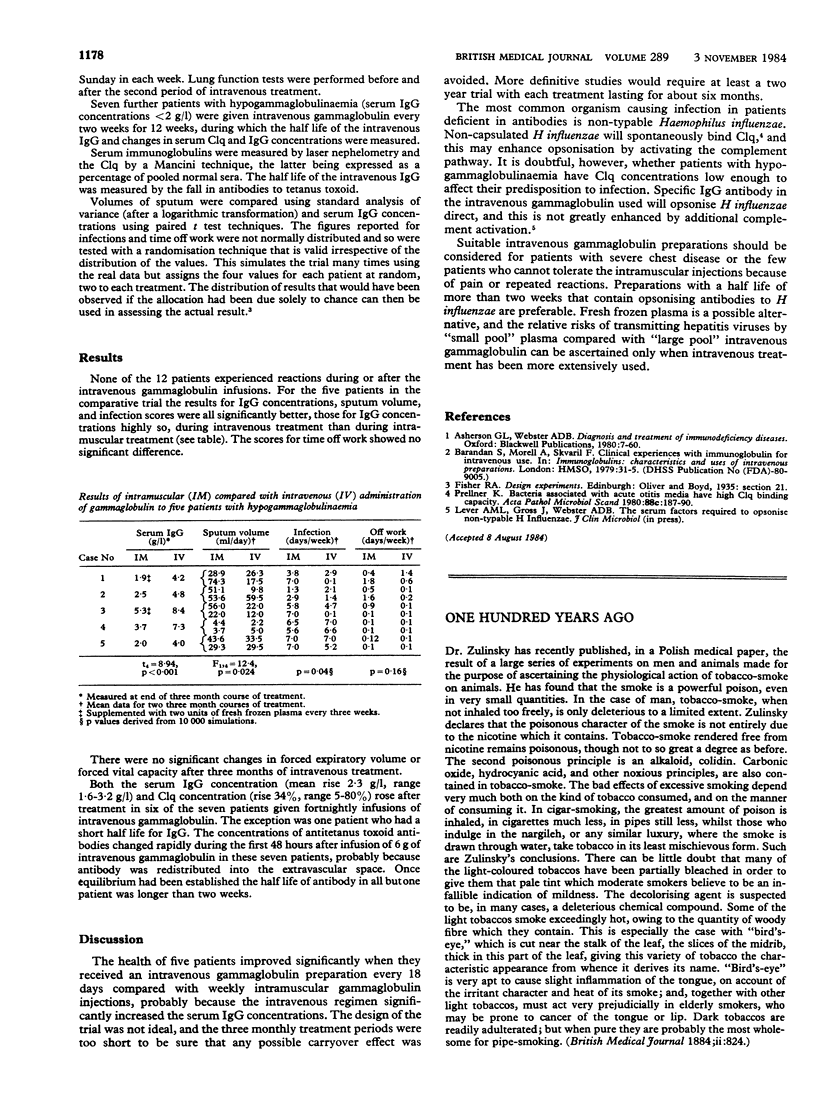Abstract
Intravenous gammaglobulin was compared with the standard British intramuscular preparation in patients with hypogammaglobulinaemia and chronic bronchitis. Five patients were given six months' treatment with the weekly intramuscular preparation and six months' treatment with intravenous gammaglobulin given once every 18 days. During the trial they recorded symptoms of infection, absence from work, and sputum volume; lung function tests were performed during the intravenous treatment. The half life of the intravenous IgG and changes in serum IgG and C1q concentrations were also measured in seven other patients who received intravenous gammaglobulin every two weeks for 12 weeks. IgG concentrations, sputum volume, and infection scores were significantly better during intravenous treatment and there were no adverse effects from the intravenous gammaglobulin. These five patients were significantly more healthy when they received an intravenous gammaglobulin preparation, probably because the intravenous preparation increased serum IgG concentrations. Although longer studies are needed, intravenous gammaglobulin should be considered for patients with severe chest disease and those who cannot tolerate intramuscular injections.
Full text
PDF



